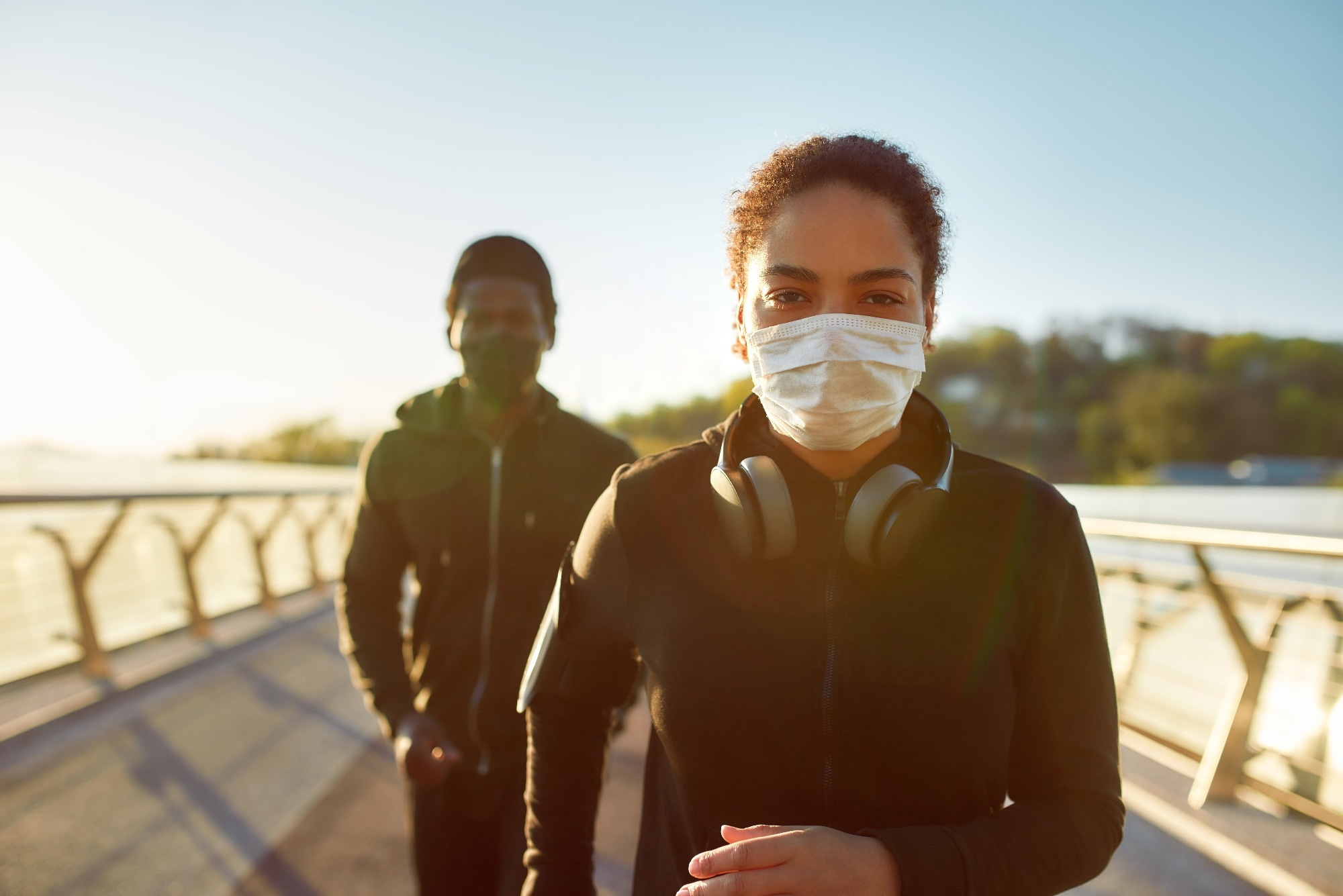In a recent study published in the British Journal of Sports Medicine, researchers performed a systemic review of data obtained from peer-reviewed studies documenting the association between regular physical activity and at least one coronavirus disease 2019 (COVID-19) outcome in adults.
The researchers used a random-effects inverse-variance model to extract and pool risk estimates from these studies.

Background
Past studies have pursued evidence for better insights into the factors contributing to severe acute respiratory syndrome coronavirus 2 (SARS-CoV-2) infection-related morbidity, hospitalization, and mortality, to improvise clinical decisions and public health strategies. These studies covered personal characteristics, such as age, gender, ethnicity, and pre-existing health conditions, including diabetes and obesity.
Regular physical activity has multiple health benefits. Thus, past studies have also suggested profound protective effects of physical activity against SARS-CoV-2 infection and disease severity. However, those effects might partly have been due to the immunological benefits of exercising. However, these studies had inconsistent findings due to varying sample sizes, ethnicity, and other characteristics. Overall, there is a lack of studies pursuing a systematic evaluation and meta-analysis of the effect of regular physical exercise on COVID-19 outcomes.
About the study
In the present meta-analysis, researchers quantified the association between physical activity and the risk of contracting SARS-CoV-2 infection in adults. Additionally, they evaluated their risk of COVID-19-associated hospitalization, severe illness, and death. The team covered all studies with adult participants (18 years or older) with or without a COVID-19 diagnosis. In addition, the included studies assessed physical activity using questionnaires or heart rate monitors, accelerometers, and other smart devices.
Further, the study analyzed outcomes, such as SARS-CoV-2 infection, COVID-19-related hospitalization, intensive care unit (ICU) admission, and death. Most importantly, all of these were cohort studies with cross-sectional, case-control, prospective, or retrospective designs. The researchers put no restrictions on language while performing the search and used a string of terms, such as ‘SARS-CoV-2’, ‘physical activity, ‘COVID-19’, ‘mortality’, ‘hospitalization’, and ‘severe COVID-19’.
Further, they manually reviewed references of all the studies meeting the eligibility criteria for other relevant manuscripts. Two authors performed the final study selection after systematically reviewing the text of identified research papers meeting study eligibility criteria. They evaluated study quality per the 14 items of quality assessment tool for observational cohort and cross-sectional studies and 12-item based quality assessment of case-control studies.
The researchers collected rate ratios (RR) and odds ratio (OR) or hazard ratios (HRs) with associated 95% confidence intervals (CIs) for each COVID-19 outcome from all the examined studies. When these parameters were unavailable, they used the Zhang and Yu method to calculate adjusted OR (aOR). They pooled RR values when comparing the reference group with physically active groups to fetch COVID-19 outcomes, considering only those RRs that had the most number of additional covariates. They recalculated studies reporting risk estimates compared to the highest category of physical activity to make a reference group.
For meta-analyses, the team performed using the random-effects inverse-variance model with the Hartung-Knapp-Sidik-Jonkman adjustment. They estimated cut-offs for low, medium, and high degrees of heterogeneity within studies based on the heterogeneity index (I2) values of 25%, 50%, and 75%, respectively. The researchers used the Doi plot and Luis Furuya-Kanamori (LFK) index to examine the effects of publication bias, where values of –1, between –1 and –2, and more than –2 indicated no, minor and major asymmetry, respectively. Finally, the researchers performed a sensitivity analysis that excluded seven studies.
Study findings
Based on the current meta-analyses of 16 studies, individuals who did regular physical activity had a lower risk of SARS-CoV-2 infection, with an RR of 0.89. These individuals also had reduced hospitalization rates, severe COVID-19, and death, with RRs of 0.64, 0.66, and 0.57, respectively, relative to physically inactive peers. Moreover, the authors noted a non-linear dose-response association between physical activity represented as metabolic equivalent of task (MET)-minute per week and severe COVID-19 and mortality.
Conclusions
To conclude, a 500-MET minute per week of physical activity, equivalent to 150 minutes of moderate-intensity or 75 minutes of vigorous physical workout every week, lowered the risk of SARS-CoV-2 infection and COVID-19-related hospitalization, severity and mortality the most. The study findings would inform recommendations and guidelines for the amount of physical activity required to mitigate the incidence and severity of COVID-19.
- Ezzatvar Y., Ramírez-Vélez R, Izquierdo M, Antonio Garcia-Hermoso. (2022). Physical activity and risk of infection, severity and mortality of COVID-19: a systematic review and non-linear dose–response meta-analysis of data from 1 853 610 adults. British Journal of Sports Medicine. doi: http://dx.doi.org/10.1136/bjsports-2022-105733 https://bjsm.bmj.com/content/early/2022/07/07/bjsports-2022-105733
Posted in: Medical Science News | Medical Research News | Disease/Infection News
Tags: Coronavirus, Coronavirus Disease COVID-19, covid-19, Diabetes, Exercise, Heart, Heart Rate, Intensive Care, Language, Medicine, Mortality, Obesity, Physical Activity, Public Health, Research, Respiratory, SARS, SARS-CoV-2, Severe Acute Respiratory, Severe Acute Respiratory Syndrome, Sports Medicine, Syndrome

Written by
Neha Mathur
Neha is a digital marketing professional based in Gurugram, India. She has a Master’s degree from the University of Rajasthan with a specialization in Biotechnology in 2008. She has experience in pre-clinical research as part of her research project in The Department of Toxicology at the prestigious Central Drug Research Institute (CDRI), Lucknow, India. She also holds a certification in C++ programming.
Source: Read Full Article
